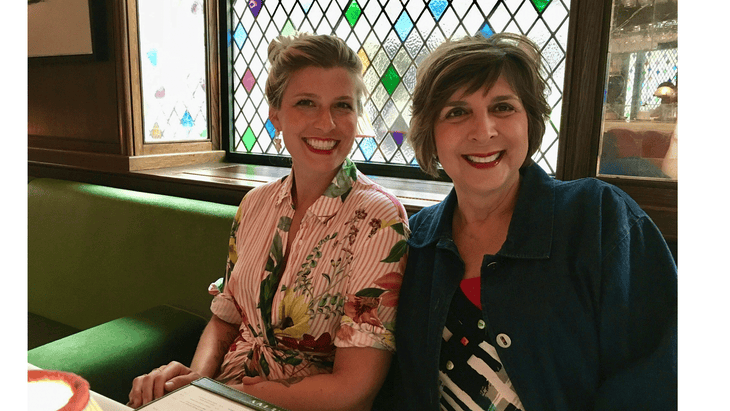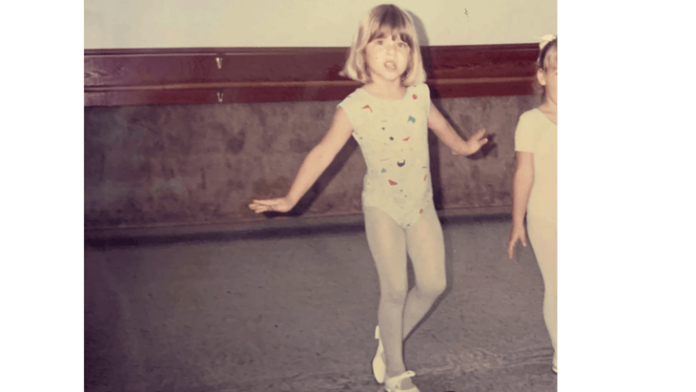“], “filter”: { “nextExceptions”: “img, blockquote, div”, “nextContainsExceptions”: “img, blockquote, a.btn, a.o-button”} }”>
Heading out the door? Read this article on the new Outside+ app available now on iOS devices for members!
>”,”name”:”in-content-cta”,”type”:”link”}}”>Download the app.
My childhood photos are a blur. A literal blur. In them, my brother and cousin, five and six years older, sit and smile obediently. I, an antsy toddler, am almost entirely out of frame, the hem of my smocked dress fluttering in the bottom left corner as I step away.
Eventually, my mother learned to clutch me in her lap for photos, especially the sitting-portrait kind. As I grew older, she bribed me to sit still. But even Slinkies and Rice Krispies Treats couldn’t hold me down. When I was about eight, my mother took me to the doctor. She thought my almost constant cracking of my neck, clicking of my jaw, and frantic whirring of my limbs meant I had Tourrette’s Syndrome.
Turns out, I just had pent-up energy. “Some people just have more dopamine in their brain than others,” our family doctor explained. He offered little more than a shrug and an expression that read, “Good luck with that!”
So I was chemically wired to move. I took tennis and dance lessons in elementary school and became a cheerleader in junior high. By the time I hit high school, I was actively practicing competition jazz and studying the basics of ballet. In college, I became a dance major.
In motion, I could go anywhere and do anything. I could focus, I could hear my body speak, I could keep my mind steady. And, in the company of other spinning silhouettes and whirling dervishes, I’d stretch and weave and bounce and waltz. When I was moving, I felt at home.
An Intro to Being Still
One morning, I arrived at my usual ballet class to find a yoga instructor. Apparently our professor had thought we could use some yogic influence. As the teacher coached us through seemingly never-ending holds in poses, she encouraged us to take long breaths and to relish the stillness.
I hated it. Every second that I was asked to remain still, I wanted to burst out of my skin like a rocket. I’m a mover! I thought. I want to explode into the air! This Tree Pose business is for the birds. If yoga equaled stillness, then I’d do everything in my power to avoid it for life.
After graduating, I moved to New York City to pursue a career as a dancer. Experiencing Manhattan only fueled my desire to go, go, go. I worked hard and partied harder, and my ambitions slowly petered out with constant rejection. I eventually got a gig as a server in a kitschy southern-themed restaurant where I segued from dancing in auditions to dancing on bars. My need to move had to go somewhere. I’ll be still when I’m dead, I thought.
After a while, I was confronted with the financial obligations of living in New York and had to take a desk job to pay rent. Desperate for any sort of movement, and humbled by how my talent had regressed in the absence of regular dance classes, I settled for hot yoga.
I didn’t like it at first, but I respected it. And I appreciated its mind-emptying, bra-soaking intensity. Whereas before I’d ached to move through the poses as quickly as possible, in hot yoga I began to look forward to the mental and emotional challenge. My mind needed a dance, choreography to follow, and hot yoga was like swimming through a gauzy cloud in adagio, bodies yawning in 105 degrees. Perhaps I was ready to slow down…just a little.
A few years later, my husband and I found ourselves in Los Angeles to try and repair something broken in our relationship. I was exhausted from a year of couple’s therapy and a heart that was cracking at the corners. I embraced California and its woo-woo subculture with open arms. I needed fixing and L.A. offered easy solutions. I bought into every green juice, ashwagandha supplement, and sound bath I could get my hands on.

My mother, still exasperated by what she considered my “Energizer Bunny” like patterns, sent me a letter that read, “May this new journey bring you joy and happiness.” I wouldn’t have admitted it then, but deep down, I had hoped–I had believed–that these new-age accouterments could help me circumvent the real work. I did yoga now! I was checking the boxes! A quiet mind would follow, right?
I was, by now, well-versed in a hot yoga practice. I began to relish lingering in Goddess Pose for longer and Pigeon Pose provided cathartic relief. I found a studio in east L.A. where I became a devoted member. That was January 2020. Soon after, the pandemic raged and the world quieted to a whisper. Classes moved online. In April I learned I was pregnant. For the first time in my life, I was forced to stop going somewhere, everywhere, anywhere all the time. Stillness was tapping me on the shoulder. And as it turned out, I didn’t hate it.
My husband and I were healing our marriage. We cooked cozy dinners and went for long, meandering walks. We cuddled and laughed and turned into ourselves. For nine months, from the comfort of my light-drenched bedroom, I practiced my breathwork as my belly expanded. I was preparing for The Great Unknown of childbirth.
Though I still opted into the occasional wellness fad from time to time, I did the work. When discomfort arose—physically and emotionally—I looked it square in the face instead of running from it. I examined it and allowed it to be. I talked less and meditated more. I gave myself permission to slow down. I thanked the Universe, God, whatever is out there, for everything.
For the first time in my life, at 37, I believed my tolerance for discomfort had reached new heights. Mentally, physically, spiritually, I was at the top of my game.
Being Still 2.0
Then I went into labor. Nothing, not even yoga, could have prepared me for childbirth. Each contraction hit me like a series of hundred-foot waves. Reeling, I’d focus desperately so as not to faint. At the time, I was disappointed. I’d been so naive. I thought I was above the pain; that I knew how to find all-encompassing stillness, my third eye. Mind over matter, right? How quickly our bodies can humble us.
I continued a yoga practice as best I could into early parenthood and beyond, although more often than not, I’d opt for 20 minutes of strength training. Whatever I could squish in between this or that. As a full-time working mom with a rotating roster of side gigs and creative projects, I thought, who has time to slow down?! Though I had experienced stillness before, I had no time for her anymore. Babies needed attention, the house needed cleaning, food needed cooking, and deadlines needed completing.
Then nine days after the birth of my second child, my mother collapsed from a cardiac arrhythmia in my home. I found her body and attempted to give her CPR but she never spoke again. She died 33 days later.
I spent nearly all my maternity leave pumping breast milk from the ICU and crying over my unresponsive mother as I shuttled between home and hospital. Everything whirred by after that. We flew with our three-year-old and our seven-week-old to Mississippi for her funeral. I returned to work. The babies needed attention, the house needed cleaning, the deadlines…I couldn’t stop if I wanted to. If I paused and allowed myself to look grief in the eyes, then it would swallow me whole and I’d never come up for air, never even bob back up to the surface. And my children needed me there on the surface with them. The bowels of grief would have to wait. Maybe forever.
But something else was born amidst the messy dichotomy of the death of my mother and the birth of my son. Inside my grief, I found tolerance. There was deafening silence where my mother had been, as if the world was put on mute. And whether I liked it or not, it brought my purpose into acute focus.
I was forced to see what was right in front of me: Everything I could ever need. My beautiful daughter, waiting for me with open arms after school; my empathetic husband, carrying the physical and emotional load when I could not bear it; my sleepy, smiley son, eager to be held in his mother’s arms. Some days I would pause, soak it in, and look around and say, “Thank you.” I realized that the trial and error of all those years, all those attempts at stillness, had prepared me for this. I could sit with the pain now. I could witness discomfort without leaping away from it.
Once my body was ready, I went back to hot yoga. At the start of my first class back, I cried quietly in Savasana. Tears trickled past my ears onto my mat as I remembered that this was my first yoga class with a dead mom. Eventually I joined in. I moved at my own pace, unconcerned with anyone else, and without any arbitrary goals. I was simply there to be.
I still seek out my practice often, and I continue to learn how to manage my grief within the confines of all that needs to be done. I’ll be 42 in a few months and I’ve finally realized that I don’t want to wait until I’m dead to be comfortable being still. I want to be present in the only moment that ever mattered. Right now.












